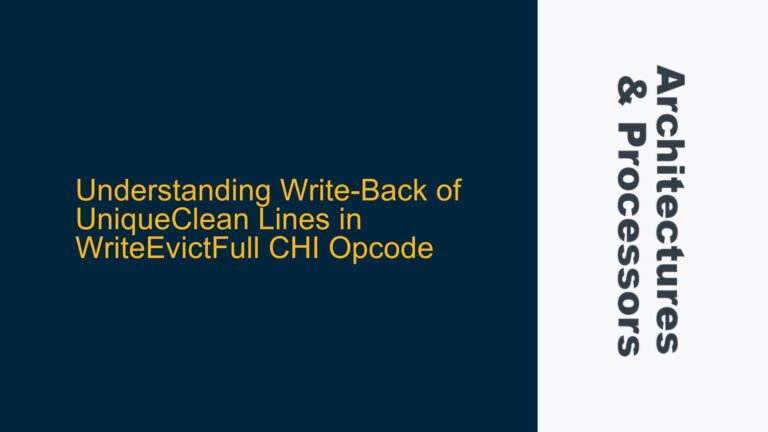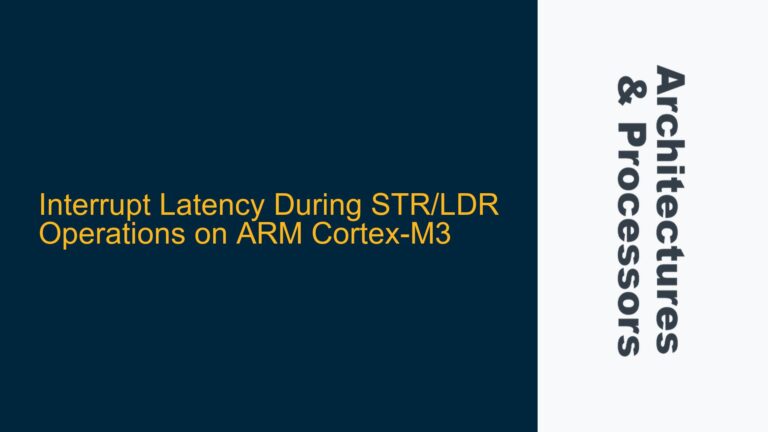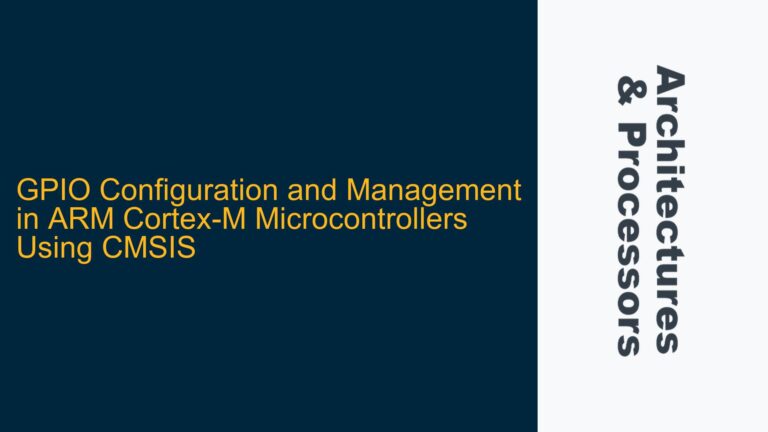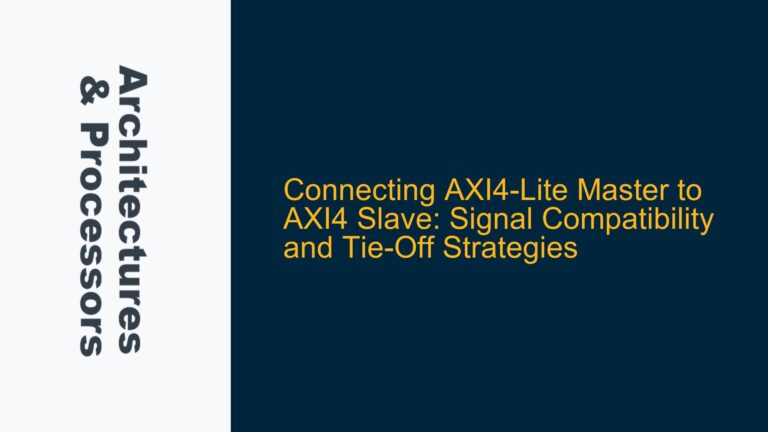Multiple Initiators Accessing Shared Targets via NIC-400 with AXI/AHBLite Interfaces
In systems where multiple initiators, such as communication interfaces, are connected to a shared set of targets via the NIC-400 interconnect, the default behavior of the NIC-400 is to employ arbitration logic to manage access to these targets. This arbitration logic is essential in scenarios where multiple initiators may attempt to access the same target simultaneously. However, in certain specialized use cases, such as when only one initiator is operational at any given time due to shared PCB IO pins, the arbitration logic may seem redundant. The desire to replace this arbitration logic with a simpler multiplexer (mux) controlled by top-level IO mux select pins arises from the need to reduce complexity and potentially save on gate count.
The NIC-400 interconnect is designed to handle AXI and AHBLite protocols, which inherently require arbitration when multiple initiators are present. The arbitration logic ensures that conflicts are resolved in a deterministic manner, adhering to the protocol specifications. However, in systems where only one initiator is active at any time, the arbitration logic remains idle, leading to the question of whether it can be replaced with a simpler mux structure.
Arbitration Logic in NIC-400 and Its Inherent Constraints
The NIC-400 interconnect is built with arbitration logic at each destination point to manage competing requests from multiple initiators. This arbitration logic is a fundamental part of the NIC-400’s architecture and cannot be removed or bypassed without significant modifications to the interconnect itself. The arbitration logic ensures that when multiple initiators attempt to access the same target, only one request is granted access at a time, while the others are either queued or rejected based on the priority settings.
The arbitration logic in NIC-400 is designed to handle complex scenarios, including out-of-order transactions, burst transfers, and different priority levels among initiators. This logic is tightly integrated into the NIC-400’s architecture, making it difficult to replace with a simple mux without compromising the integrity of the interconnect. Furthermore, the arbitration logic ensures that all transactions comply with the AXI or AHBLite protocols, which include requirements for handshaking, data integrity, and transaction completion.
In systems where only one initiator is operational at any given time, the arbitration logic remains inactive, as there are no competing requests to resolve. However, the presence of this logic still incurs a gate count penalty, even though it is not actively used. This has led to the exploration of alternative solutions, such as implementing a simple mux controlled by top-level IO mux select pins, to bypass the arbitration logic entirely.
Implementing External Switching Logic to Replace NIC-400 Arbitration
Given the constraints of the NIC-400’s arbitration logic, the only viable solution to replace it with a simple mux is to implement external switching logic. This external logic would need to handle the switching between initiators, ensuring that only one initiator is connected to the target at any given time. The external switching logic must also account for any outstanding transactions, ensuring that they are completed before switching to another initiator.
The external switching logic would need to be designed to handle the specific requirements of the AXI or AHBLite protocols. For AXI, this includes managing the handshaking signals (AWVALID, AWREADY, WVALID, WREADY, etc.) and ensuring that transactions are completed before switching. For AHBLite, the logic would need to manage the HREADY signal and ensure that the bus is idle before switching.
One approach to implementing this external switching logic is to use a combination of multiplexers and finite state machines (FSMs). The multiplexers would be used to route the signals from the selected initiator to the target, while the FSMs would manage the switching process, ensuring that transactions are completed before switching. The FSMs would also need to handle error conditions, such as timeouts or protocol violations, to ensure the integrity of the system.
The external switching logic would need to be carefully designed to avoid introducing new issues, such as race conditions or deadlocks. This would require thorough simulation and verification to ensure that the logic operates correctly under all possible conditions. Additionally, the external switching logic would need to be integrated with the rest of the system, including the top-level IO mux select pins, to ensure that the switching process is controlled correctly.
In conclusion, while it is not possible to replace the arbitration logic within the NIC-400 with a simple mux, it is possible to implement external switching logic to achieve a similar result. This external logic would need to be carefully designed to handle the specific requirements of the AXI or AHBLite protocols and to ensure that transactions are completed before switching. This approach would allow for a simpler mux-based solution in systems where only one initiator is operational at any given time, while still maintaining the integrity of the system.






